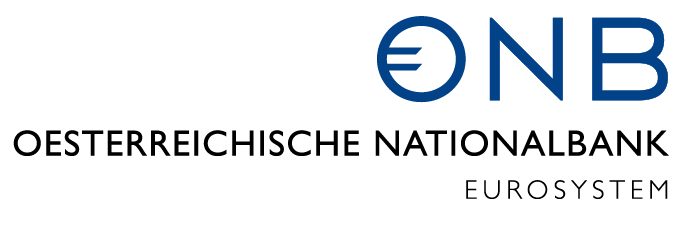

Oesterreichische Nationalbank
Otto-Wagner-Platz 3, 1090 Vienna
& online via Webex

Central banks are currently facing a number of substantial challenges and their various business areas, like in many sectors of the economy and in economic policy making, are undergoing fundamental structural changes. Among other themes, central banks face strategic questions such as: What will be the future monetary policy toolkit, once a “new normal” has been reached, with inflation back to established inflation targets, while the geopolitical and economic environment will likely remain challenging? How will the digital transformation and AI affect monetary policy? How to deal with persistent high uncertainty in an age of polycrises – how is monetary policy affected, what role for central bankers as risk managers? Are central bank finances relevant for central banks’ independence and their ability to deliver on their price stability mandate? How to deal with central banks’ strongly expanded de iure or de facto scope of responsibilities – what implications might “mission creep” have on democratic accountability and central bank independence? What are the interrelations between monetary policy and structural changes, do central banks have a role in facilitating certain structural reforms?
The central bank of the future: challenges for monetary policy and central bank communication
Athanasios Orphanides, Professor, Massachusetts Institute of Technology Presentation (pdf)How should central banks’ operational frameworks adapt to a rapidly and fundamentally changing environment? What implications from large central bank balance sheets and their repercussions on the volatility of central bank’s net earnings?
Central Bank Capital and Shareholder Relationship
Dirk Broeders, European Central Bank Presentation (pdf)Co-authors: Matteo Bonetti, Damiaan Chen, Daniel Dimitrov, De Nederlandsche Bank
Collateral Easing and Safe Asset Scarcity: How Money Markets Benefit from Low-Quality Collateral
Stefan Greppmair, Deutsche Bundesbank Presentation (pdf)Co-authors: Karol Paludkiewicz, Sascha Steffen, Frankfurt School of Finance and Management
Corridors of Power
Kilian Rieder, Northwestern University I Oesterreichische Nationalbank I SUERF Presentation (pdf)Co-authors: Robert Ferstl, Claudia Kwapil, Oesterreichische Nationalbank
How does digitalization affect the interaction between the financial system and monetary policy? What effect has the rise of non-bank financial intermediaries? How will new forms of electronic money, including CBDC, change monetary policy and its interactions with the financial system and the economy at large?
Mission creep, democratic accountability and central bank independence
Rosa Lastra, Sir John Lubbock Chair in Banking Law, Queen Mary University of London Dinner speech (pdf)Since the GFC, central banks have been facing a challenging and fast-chaging environment. In the face of large and multiple shocks and an increasingly complex monetary policy toolkit, defining and communicating the central bank’s reaction function becomes increasingly complex.
Market perceptions, monetary policy, and credibility
Vincenzo Cuciniello, Bank of Italy Presentation (pdf)Fed’s policy rule: A discrete-choice regime-switching approach
Andriy Sirchenko, Nyenrode Business University Presentation (pdf)Whose Inflation Rates Matter Most? A DSGE Model and Machine Learning Approach to Monetary Policy in the Euro Area
Johannes Zahner, Goethe University Frankfurt Presentation (pdf)Co-authors: Daniel Stempel; Heinrich Heine University Düsseldorf
After years of failing to deliver on their mandate, the post-pandemic overshooting of inflation and the required sharp rise in policy rates caught everybody, including central bank treasurers, by surprise. Could the prospect of central banks needing recapitalization threaten their independence and in turn their ability to deliver price stability?
How have businesses’, consumers’ and wage setters’ behavior changed in response to the return of inflation, the sharp rise in interest rates, rising uncertainty and multiple secular changes? What are the implications for optimal monetary policy?
The global surge in inflation post-covid and due to escalating geopolitical conflict has triggered a rich research agenda on changes to the the inflation process, inflation forecasting, and the formation of inflation expectations.
The return of inflation and inflation risks
Juan Angel Garcia, ECB Presentation (pdf)Co-authors: Ricardo Gimeno, Banco de España; Piers Hinds, Haozhe Su; Michael Tretyakov; University of Nottingham
Can supply shocks be inflationary with a flat Phillips Curve
Jean-Paul L’Huillier, Brandeis University Presentation (pdf)Co-author: Gregory Phelan, Williams College
Maximally forward-looking core inflation
Karin Klieber, Oesterreichische Nationalbank Presentation (pdf)Co-authors: Philippe Goulet Coulombe, Christophe Barrette; Université du Québec à Montréal; Maximilian Göbel, Bocconi University